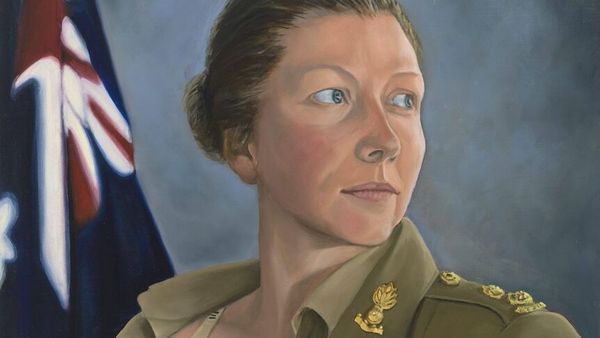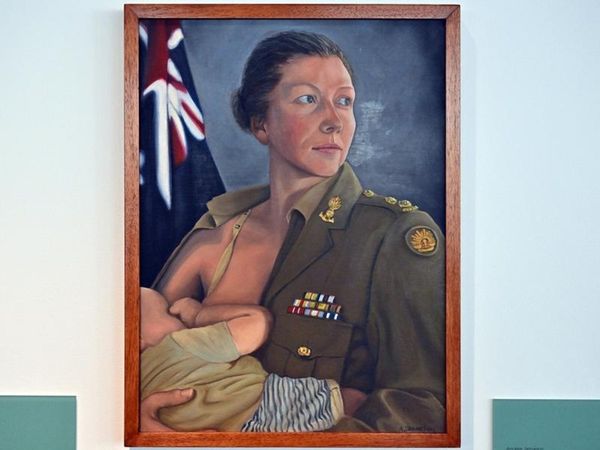
When Charles Bean first conceived of an Australian war memorial, he wanted it to be more than just a shrine of remembrance.
It would be a museum, a monument, a temple, and a place to help people understand the effects and the legacy of war.
To do that, the Australian War Memorial would need art, and lots of it.
The Official War Art scheme came into being in 1917, long before the memorial itself opened in 1941, and is now the longest running art commissioning program in Australia.
Over the years, the memorial has sent artists into conflict zones all around the world, to bear witness and interpret what they see, including both World Wars, and the Middle East, Korea, Vietnam and the Solomon Islands.
Today, the memorial's vast art collection spans more than 100 years and some 40,000 works, including by some of the country's biggest names, like Arthur Streeton, Sidney Nolan and Stella Bowen.
The head of the collection, Laura Webster, said many people were surprised to discover the memorial held more than just war paraphernalia in its collection, and that often artworks were the most potent way to communicate the horrors and aftermath of war.
"Artists are always quite often at the forefront of talking about difficult and interesting subject matter," she said.
"I think the memorial's collection very much does represent that, especially more recently."
The collection has evolved over time, not just as a result of the official war artist scheme, but also through a process of acquiring and commissioning works to expand and complete what's already there.
"If something pops up and we don't have a broad representation of the topic that it's representing, and if it happens to be a very important artist and artwork itself, that adds to it," she said.
"When we're looking at commissioning [a work], it's often when we're looking at the things that are of interest to people now, that may not have been at the time and so we may not have reflected on that within the collection."
And the collection is not only populated with works by professional artists.
The Napier Waller Art Prize, now on show at Parliament House, is open to current and former Australian Defence Force members.
Begun in 2018, the prize is named after Australian artist Mervyn Napier Waller, who fought and was wounded in France in 1917 and later created the mosaics and stained glass windows in the memorial's Hall of Memory.
The prize winner will be announced on Thursday.
One of this year's judges is renowned artist eX de Medici, who the memorial commissioned to observe peacekeeping activities in the Solomon Islands in 2009.
She said the prize - which this year received 116 entries across various mediums - was a potent insight into the effects of modern-day conflict.
"The overwhelming thing that I've found as a judge for three of these prizes is the disturbance that is reflected in the work," she said.
"I think we're constantly reminded of the damage these people suffer from these horrendous things that they're forced to do."
- Napier Waller Prize finalists are on display at Parliament House until November 20.










